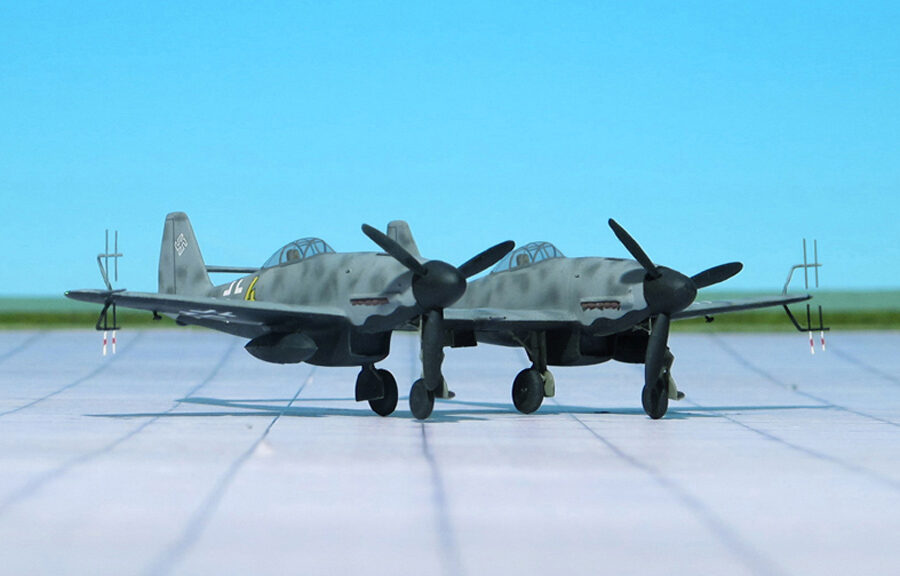TYPE: Night- and bad-weather fighter
ACCOMMODATION: Pilot and radar-operator/navigator
POWER PLANT: Two Daimler-Benz DB 603g liquid-cooled engines, rated at 1,726 hp each
PERFORMANCE: 472 mph at 27.800 ft
COMMENT: As early as 1940, the Messerschmitt design bureau concerned itself with the idea of fusing two fighters into a single airframe to provide a considerable increase in range and payload. The work was based on a RLM edict to simplify the number of combat aircraft to a few basic models.
Known as Messerschmitt Me 109Z Zwilling (twin) and Messerschmitt Me 609, the layouts were primarily intended as Zerstörer (Destroyer), Schnellbomber (Fast bomber or Nachtjäger (Night fighter). Following detailed examinations, the most suitable solution capable of early production indicated the use of a Daimler-Benz DB 605A-powered Messerschmitt Me 109G. A considerable performance increase, however, was to be expected if 2,000 hp Junker Jumo 213 engines were installed, requiring only a few alteration to incorporate complete major components of the standard aircraft. The modifications were limited mainly to the need of a completely new constant –cord wing center section and tailplane that simplified manufacture. Besides relocation of the undercarriage attachment points and the use of larger wheels, the ailerons and outboard leading-edge slots were lengthened and auxiliary fuel tanks were installed. In the course of development work on the twin aircraft, the Messerschmitt Me 309 was also considered and resulted in the Messerschmitt Me 609 destroyer, fast bomber and night fighter. The more powerful engine intended for the Messerschmitt Me 609 led to improvements in flight performance.
For the Night fighter version a FuG 217V/R “Neptun” radar with smal “Hirschgeweih” (Stag’s Antlers) aerial array was provided. These were mounted at the wingtips close to the leading edge. When all work on the unsuccessful Messerschmitt Me 309 was stopped all further effort on the Me 609 was cancelled (Ref.: 24).












